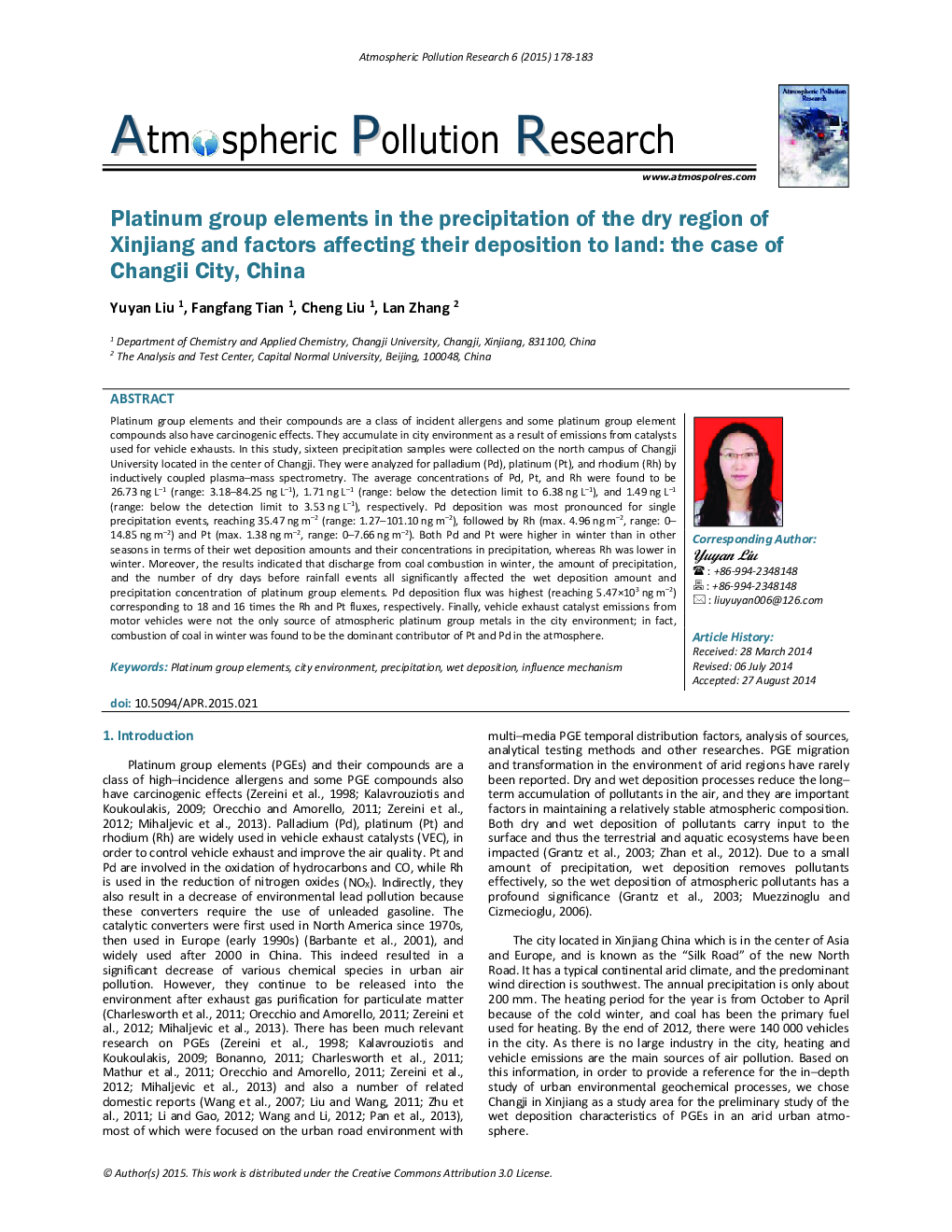| Article ID | Journal | Published Year | Pages | File Type |
|---|---|---|---|---|
| 4434901 | Atmospheric Pollution Research | 2015 | 6 Pages |
Platinum group elements and their compounds are a class of incident allergens and some platinum group element compounds also have carcinogenic effects. They accumulate in city environment as a result of emissions from catalysts used for vehicle exhausts. In this study, sixteen precipitation samples were collected on the north campus of Changji University located in the center of Changji. They were analyzed for palladium (Pd), platinum (Pt), and rhodium (Rh) by inductively coupled plasma–mass spectrometry. The average concentrations of Pd, Pt, and Rh were found to be 26.73 ng L-1 (range: 3.18–84.25 ng L-1), 1.71 ng L-1 (range: below the detection limit to 6.38 ng L-1), and 1.49 ng L-1 (range: below the detection limit to 3.53 ng L-1), respectively. Pd deposition was most pronounced for single precipitation events, reaching 35.47 ng m-2 (range: 1.27–101.10 ng m-2), followed by Rh (max. 4.96 ng m-2, range: 0–14.85 ng m-2) and Pt (max. 1.38 ng m-2, range: 0-7.66 ng m-2). Both Pd and Pt were higher in winter than in other seasons in terms of their wet deposition amounts and their concentrations in precipitation, whereas Rh was lower in winter. Moreover, the results indicated that discharge from coal combustion in winter, the amount of precipitation, and the number of dry days before rainfall events all significantly affected the wet deposition amount and precipitation concentration of platinum group elements. Pd deposition flux was highest (reaching 5.47×103 ng m-2) corresponding to 18 and 16 times the Rh and Pt fluxes, respectively. Finally, vehicle exhaust catalyst emissions from motor vehicles were not the only source of atmospheric platinum group metals in the city environment; in fact, combustion of coal in winter was found to be the dominant contributor of Pt and Pd in the atmosphere.
